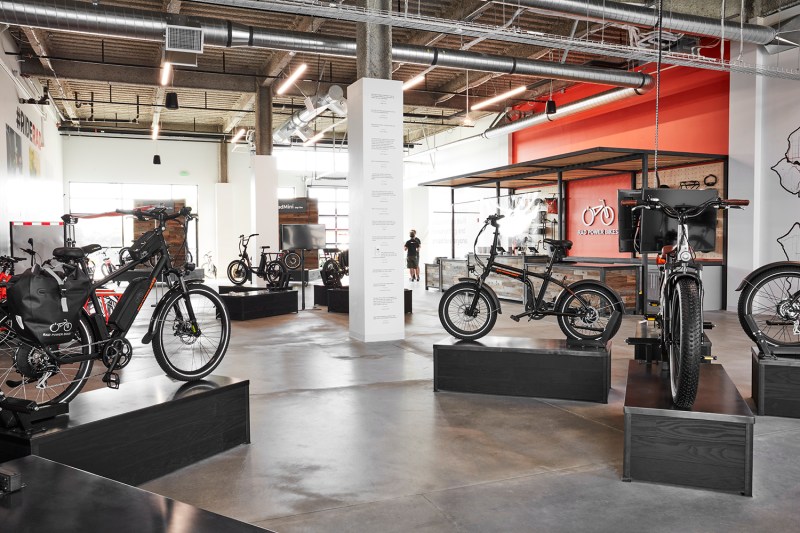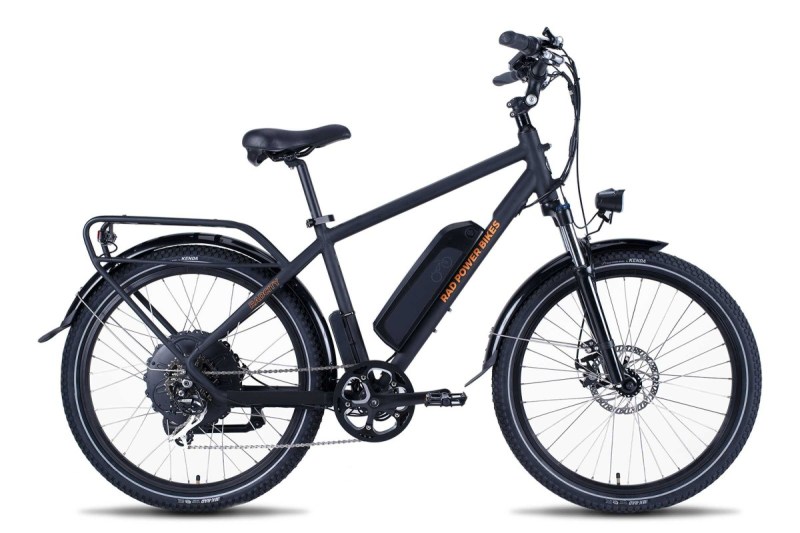If you’re seen a growing number of bicycles whizzing by at unusually high speeds, it’s not your imagination. The e-bike revolution is here, and among the most popular brands is Rad Power, which manufactures a wide variety of e-bike styles to suit a range of purposes. One of the most unique aspects of Rad Power involves its shops and service centers, which are more like high-end car dealerships than typical bike stores. These shops are popping up all over the country, from Seattle to New York.
So the question is: Are Rad Power e-bikes worth the hype? I’ve not only had the chance to try out several of the models and have visited a handful of the stores, but I have also tested them alongside dozens of e-bikes from other leading brands. Here’s what I think about Rad Power.

The Rad Power Fleet of E-Bikes
Rad Power offers an expansive selection of e-bikes designed for a variety of purposes. There’s the RadCity series for commuters, the RadRover, which leans into off-roading with its fat tires, and the RadWagon, which is built for carrying cargo, and more. The major benefit to this diverse fleet is clear: There’s an option for pretty much every need. Whether you need something comfortable and dependable to get to and from work, something fun for buzzing around trails, or even something capable of carrying kids, Rad’s got it.
Another key benefit involves customizability. The company offers an impressive suite of accessories that can tailor a bike to your needs, such as front and rear baskets, panniers, mirrors, center consoles, water bottle holders, passenger platforms, child seats, fenders, and a lot more.
From my experience, Rad’s bikes offer a smooth, fun riding experience. Unlike other e-bikes in the more affordable segment (unless you go crazy with options, Rad bikes top out at under $2,500), its components never feel flimsy and the build quality is solid. Their range and speed are impressive, rivaling anything I’ve seen. And they’re comfortable enough for long rides.
The only issue I have with them is their weight. All the models I’ve tried have been extremely heavy — heavier than any other brand I’ve come across — which makes it difficult to load them onto a transportation rack. And if you expect to carry one up and down a flight of apartment stairs on a regular basis, forget it.
Other than that, I have no complaints about their quality and ridability.

The Rad Power Ecosystem
One of the major draws to Rad Power is the wider e-bike ecosystem. As I mentioned above, the shops have a car dealership vibe that not only makes for an enjoyable shopping experience, but it also makes the service process easy. It has a somewhat more family-oriented atmosphere than that of a VanMoof shop — VanMoof leans more toward techy professionals.
I’m a big fan of how sleek the shops are, and how you can replicate your experience from one location to the next. For example, while my bike came from the shop in Seattle, I brought it to the Vancouver location when I needed brake service. That adds cohesion to the ownership experience that is hard not to appreciate.
At the same time, the skeptic in me does wonder if the omnipresence of service centers means the bikes are expected to require service on an overly regular basis. E-bikes are admittedly pretty techy, and from what I’ve seen pretty much every e-bike will need maintenance at some point. But does Rad forecast the potential for more service than unusual? Or is it just part of the company’s ecosystem? Maybe we’ll update this article in a year or so and you can find out.
In any case, overall both the bikes and the shops are pretty impressive. They’re particularly good options for families who can benefit from the diverse models offered and general ease of use.
Standout Rad Power Bikes

Currently, Rad Power offers seven models, several of which are available in step-thru versions. I think three, in particular, stand out.
The RadCity — which as of this writing is in its fourth edition — is a pretty great all-around e-bike. Its upright beach cruiser stance is perfect for navigating urban spaces, and its performance is outstanding: Solid acceleration and above-average range.
The RadRover is essentially a slightly smaller, stouter version of the RadCity, but equipped with fat tires for off-road grip. It’s a great little ride for bombing over dirt or gravel, and its trimmed-down stance makes it more rideable for smaller riders or adolescents.
The RadWagon needs to be mentioned if only because of the sheer variety of layouts I’ve seen built into it. I’ve seen people hauling around their kids, cargo, cargo plus kids, with handles for the kids, without handles, one parent two kids all under a rain cover, pets, pets with kids… you get the picture. It’s exceedingly versatile.
Editors' Recommendations
- Mountain bike gift guide: 12 fantastic ideas for the mountain biker in your life
- The best electric bike options to make your commute or adventure greener
- 3 expensive mountain bike upgrades that are worth the splurge
- Your weird mountain bike questions, answered
- How to choose the right mountain bike for you: Your 3 biggest considerations




